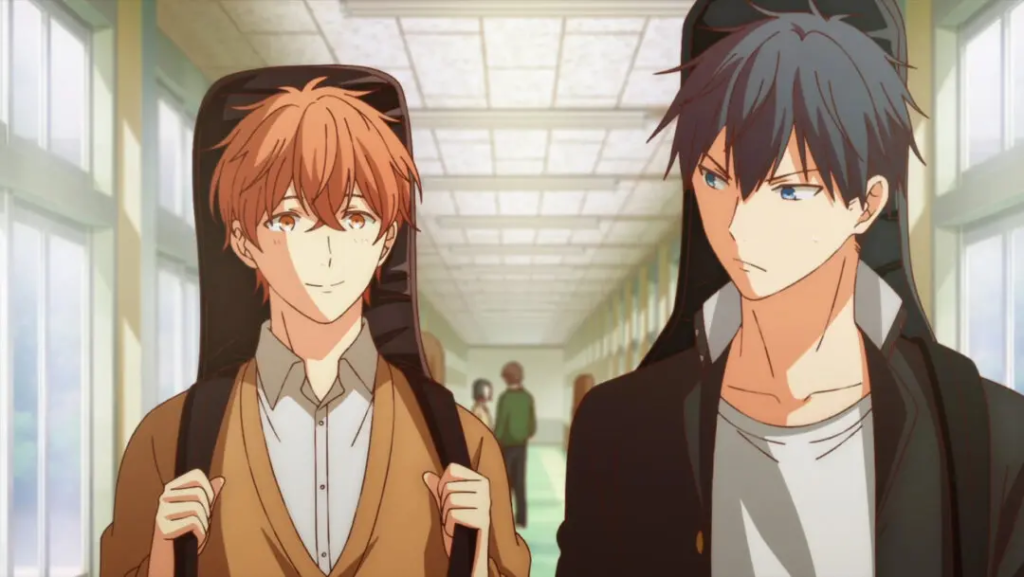Yaoi, also known as boys’ love (BL), has become an integral part of anime culture, transitioning from a niche genre to a celebrated form of storytelling. This illustrious journey from the margins to mainstream acceptance reflects changing perceptions of romance, gender roles, and LGBTQ+ relationships in society. The history of yaoi is as fascinating as the stories it tells, revealing a dynamic shift in audience demographics and cultural attitudes. In this article, we’ll explore the origins of yaoi in Japanese anime culture, its evolution, and its impact on audiences worldwide. Keep reading to discover how yaoi anime has left an indelible mark on the industry.
Table of Contents
The Origins of Yaoi in Japanese Anime Culture

The roots of yaoi can be traced back to the fan-driven “shounen-ai” or “boy love” movements of the 1970s. This genre was characterized by romantic and sometimes sexual relationships between male characters, primarily created by and for women. Originally, these narratives were confined to manga, but the growing popularity soon demanded adaptation into anime format.
Early yaoi works were often subversive, challenging both social norms surrounding gender and the heavily censored environment in which they were produced. Creators had to be cautious and creative in how they depicted relationships, using coded behavior and innuendos to suggest romance and intimacy between characters. Despite the restrictions, the genre slowly built a dedicated fanbase.
During these formative years, yaoi was considered a subculture within the broader anime community. The consumption and enjoyment of yaoi content were private, often shared among circles of enthusiasts through doujinshi (self-published manga) and underground fan clubs. The presence of yaoi in mainstream media was virtually nonexistent, setting the stage for its revolutionary ascent.
As interest in yaoi grew, so did the production of works that openly explored complex themes beyond pure romance. These narratives began questioning societal expectations, providing a space for gender exploration and the deconstruction of traditional masculine archetypes.
Subtextual Representation: How Yaoi Began Its Journey
Before yaoi found a broader audience, subtext was the primary method for representing male-male relationships in anime. Subtextual representation meant that homoerotic undertones were present, but these relationships were never explicitly acknowledged or consummated on screen. It was a way for creators to circumvent censorship and appeal to yaoi enthusiasts without alienating mainstream viewers.
Shows like “Legend of the Galactic Heroes” and “Saint Seiya” became famous for their subtextual content, inviting viewers to read between the lines. These series hinted at deep bonds and affection between male characters, creating a breeding ground for fan speculation and transformative works that expanded upon the implied relationships.
However, subtext alone was not sufficient for fans craving authentic representation. As the demand for explicit yaoi content increased, the industry began to experiment with more overt depictions of male-male love stories. This shift mirrored broader cultural movements toward LGBTQ+ acceptance and visibility.
The transition from subtext to text was gradual, but pivotal shows began to challenge the status quo, providing the impetus for more anime to showcase yaoi relationships. Some series, albeit still few and far between, started depicting overt romantic and emotional connections between men, hinting at the genre’s potential to push into the limelight.
Breaking Barriers: Yaoi’s Transition to Mainstream Anime

The new millennium marked a significant turning point for yaoi anime. With the rise in internet usage and digital forums, the visibility of the genre increased, drawing in a more diverse audience. This growth in fanbase set the stage for yaoi to break out of its niche and into mainstream consciousness.
Anime series like “Gravitation” and “Junjou Romantica” played instrumental roles in this transition. They were among the first to bring yaoi relationships to the forefront without relegating them to subtext or background narratives. These series featured compelling stories that resonated with viewers, allowing them to connect with a broader audience.
As the genre gained more acceptance, production companies recognized the lucrative potential of yaoi anime, leading to increased investment and higher-quality adaptations. It was during this period that barriers between “otaku” culture and mainstream entertainment began to blur, allowing for a more uninhibited exploration of gender and sexuality in anime.
Yaoi’s move to mainstream media also brought about more nuanced narratives, challenging the genre’s early tropes and stereotypes. By delving into the complexities of relationships and individual identities, yaoi anime began to reflect a more realistic, diverse range of experiences, resonating with audiences across the globe.
Overall, the evolution of yaoi in anime highlights a broadening of horizons and a celebration of storytelling diversity. What was once a subcultural phenomenon has blossomed into a cornerstone of contemporary anime, challenging norms and enriching the medium with heartfelt, progressive tales of love and identity.


